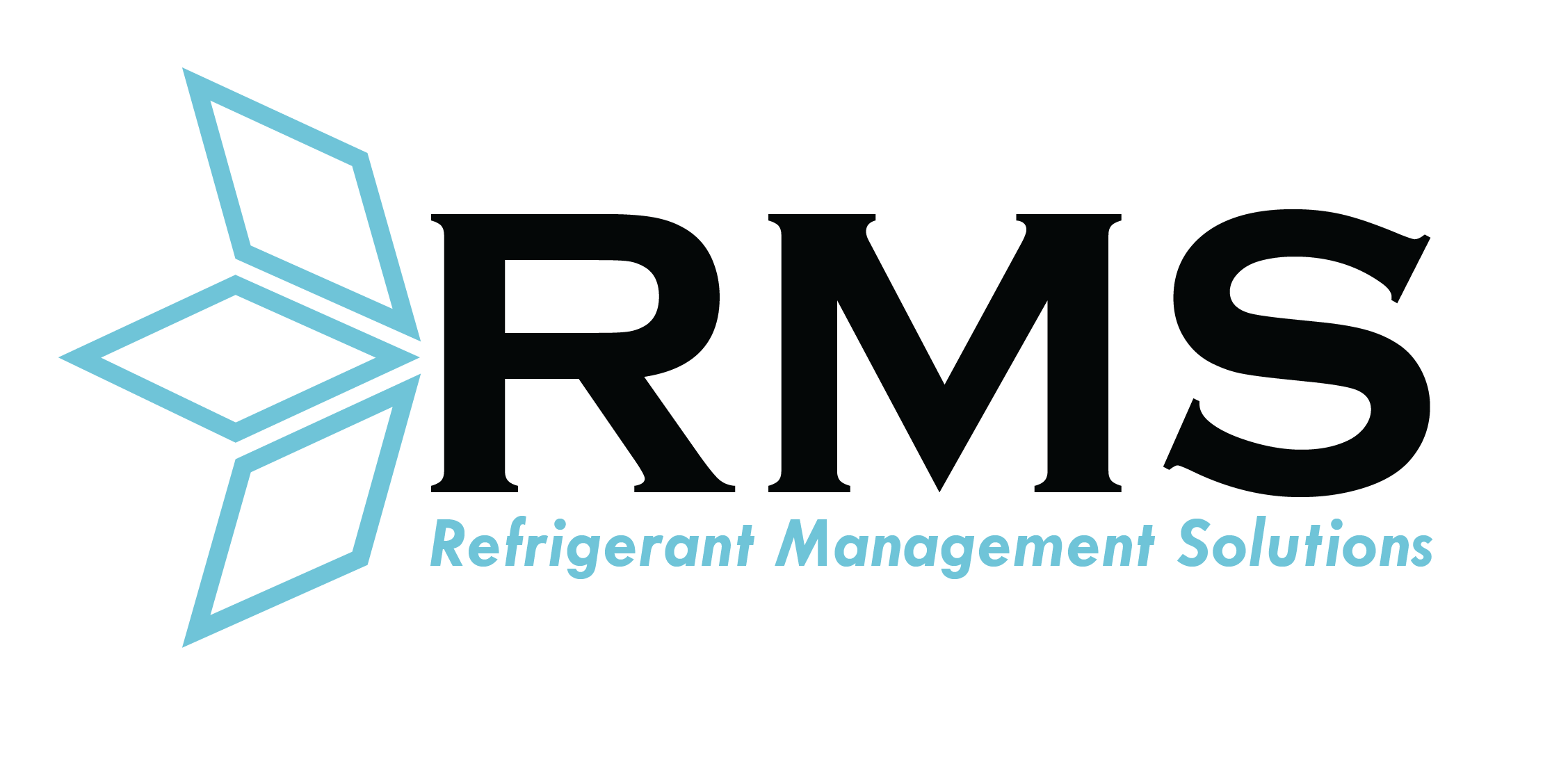Those of you familiar with the EPA’s Technology Transitions Rule (TTR) know that it only applies to new appliances. You can continue to operate your existing systems under the TTR. Except … Yes, there is always an “except” when it comes to EPA regulations. You’re lucky if there’s only one. The TTR has two.
Exception #1: Increasing the cooling capacity, in BTU per hour, of an existing system [40 CFR 84, §84.54(e)(2)]. See https://www.federalregister.gov/d/2023-22529/p-1329.
Under the TTR, if you increase the cooling capacity of an existing system, the existing system magically turns into a “new” system, and the refrigerant used after the increase must fall within the GWP limits under the TTR. Since there aren’t any retrofit refrigerants with low-enough GWPs to meet the TTR requirements, you have to replace the whole appliance. For a rack system, that means replacing the entire rack system: all cases on all circuits, all compressors, all condensers, all piping, etc.
Imagine a scenario where someone from merchandising wants to add one charcuterie case onto the rack system that refrigerates the deli, meat, seafood, and dairy sections of the store. Adding that one case to the rack means you are increasing the cooling capacity of that rack system under the TTR, which means that the system has to be replaced.
If you are thinking right about now that this doesn’t make any sense, I agree with you. If you are also thinking, crap, something like that could easily happen, I also agree with you. You’d be hard-pressed to find a normal person who would look at an existing rack system with 50 display cases and one new charcutier case and say, “that’s a whole new appliance.” That would be like saying that because I grew my hair longer, I’m a whole new person. You’d also be hard-pressed to find a person in merchandising at any supermarket company who does not want to sell more stuff, everywhere possible, within a store. To them, that’s their job.
Unfortunately, the part of the regulation that outlines how this trigger works does not set any kind of threshold level for the increase. That means that any increase, no matter how small, triggers the definition of a new appliance.
The solution for situations like the one in the previous example, of course, is to take the deli case line up off the existing rack system and put it onto a new remote condensing unit that uses a low-GWP refrigerant that complies with the TTR, leaving the existing rack system with a reduced cooling load.
Another solution could be to remove another case from the existing rack system that equals the BTU load of the new charcuterie case. That keeps the cooling capacity of the rack system the same, which presumably avoids triggering the definition of a new appliance. I say presumably, because as far as I know, the EPA has not explicitly stated anywhere that this is OK. But they also don’t say anywhere that I can find that it’s not OK. It’s a good idea to ask your legal department where they sit with regard to this solution.
That’s not the only issue with the cooling capacity trigger. The other issue is that the TTR doesn’t define which “capacity” the EPA means when they refer to an increase in the cooling capacity. The first question everyone always asks me when I go over this watchout with them is “which capacity.” Design capacity? Compressor capacity? Evaporator heat load of the appliance?
When I asked during an EPA webinar whether the EPA meant the evaporator heat load by the term “cooling capacity,” the EPA said yes. Unfortunately, when my colleague asked the EPA during another webinar whether upsizing a compressor on a rack system met the definition of increasing the cooling capacity, the EPA also said yes. The lesson in this? Don’t ask any more questions after you get the response you want.
To try to iron out this discrepancy, RMS emailed the EPA the following question: “Under the Technology Transitions Rule, on an existing supermarket system, is it ok to upsize a compressor to a larger horsepower model in order to meet the unchanging cooling load and maintain capacity plus safety factor when retrofitting from R-507 to the lower-GWP refrigerant R-448A? We want to confirm that this will not trigger 40 CFR 84.54(e)(2), increasing the cooling capacity, in BTU per hour, of an existing system, and therefore prohibit retrofitting the system to R-448A.”
The EPA responded: “Based on the information you’ve provided, this sounds like a retrofit application. We agree that this action would not constitute the installation of a new system under 40 CFR 84.54(e)(2).”
That doesn’t answer every question you can imagine, but it seems to suggest that the EPA is not referring to compressor capacity when they refer to increasing the cooling capacity of the appliance.
Exception #2: Replacing 75 percent or more of evaporators (by number) and 100 percent of the compressor racks, condensers, and connected evaporator loads of an existing system. [40 CFR 84, §84.54(e)(3)]. See https://www.federalregister.gov/d/2023-22529/p-1330.
At first glance, this exception seems more straightforward and self-explanatory. It’s not.
The first question I get is whether you trigger the definition of new if you replace the compressors alone. I was surprised that this was an issue, perhaps because I was an English major in college. There is clearly an “AND” in that sentence – not an “OR.” That means that you have to replace all the compressor racks AND the condensers, AND the connected evaporator loads of the system to trip the “new appliance” trigger and have to replace the whole rack system. Side note: this is the second time that being an English major has helped me in the HVACR industry. Three cheers for English majors! We English majors need to be told as often as the opportunity arises that we play a meaningful role in the world. Because the opportunity does not arise often.
I had two completely different problems.
Do you count the component replacements over the entire lifespan of the rack system, starting with the compliance date in the TTR for the particular equipment category you are dealing with (for racks as of today, that date is January 1st, 2027)? If, like in California, you have to replace all the relevant components in the same project to trigger a similar state regulation, that makes it easier to manage and easier to avoid the trigger. But it also defeats the entire purpose of having this trigger in the regulation. Just split the work into two separate projects and you’ve bypassed the CA regulation. It makes more sense to track component replacements over the lifespan of the appliance, though it’s very difficult to do that given current record-keeping software. Washinton state has you track component replacements over time for a similar trigger in their state regulations.
The other problem I have revolves around terminology. Isn’t a “compressor rack” just the steel frame that a bunch of compressors sit on? Why doesn’t the regulation say 100% of the compressors? And why is it “connected evaporator load,” rather than 75% of the evaporators? Or better yet, 75% of the evaporator coils? An evaporator load is not a component, unless I’ve missed something big in my career. The evaporator load is a number. Isn’t it? (I admit that I began to doubt myself on this, so I double-checked the definition of evaporator load, and it is, indeed, a number, i.e. the amount of heat the evaporator needs to remove from the space being cooled to maintain the desired temperature).
Can you bypass the compressor part of this trigger if you replace all your compressors, but you leave the existing steel rack that the compressors sit on? And regardless of what you do with your compressors and condensers, since the evaporator load of a case is not something you can replace, can you just forget about this entire trigger completely? As discussed in the point above, the sentence has an “AND,” not an “OR,” so if you never replace your evaporator load, you never trigger the exception.
I recently heard of a component replacement situation that clearly should trigger the definition of new in the TTR. Prior to hearing this story, I would have said that this never happens. Except that it did happen. The situation was a store remodel that included the replacement of all the cases, all the compressors, and all the condensers on all of their existing rack systems at the store. The remodel also included retrofitting all the rack systems to use a new refrigerant. During the retrofits, the company replaced all the valves and re-piped parts of each appliance. There wasn’t much left of the existing appliances. I don’t know why this store went that route instead of just replacing the old rack system with a new rack system. The person who told me the story said that he didn’t know why they did that either. It was a long time ago, before the storyteller even worked at the company. People did screwy things in the old days.
I have no problem with calling that rack system a new rack system. Very little of the old rack system still exists. If someone replaces my heart, my liver, my head, my brain, my arms, my legs, my joints, and all the blood in my body, am I still the same Keilly Witman? I might still call myself Keilly Witman, just like the before-mentioned store still might call their new rack systems Rack A, B, and C, but I’d definitely consider myself a new Keilly Witman. My bellybutton would still be the old bellybutton, but that’s pretty unimportant in the grand scheme of things – just like the few remaining parts of the old rack system.
I asked the EPA during one of their webinars whether the component replacements accumulate over the lifespan of the appliance, or if the replacements had to happen all at the same time to trip the trigger. The EPA said they didn’t know. They have other things to worry about right now, so I doubt we will get an answer on this any time in the next 3.5 years.
What is the EPA’s perspective on this?
The EPA always has a rationale for why they set up a regulation the way they did. You can agree with their reasoning or not, but they have to have a reason; otherwise the regulation is “arbitrary and capricious.”
The Technology Transitions Rule is designed to ensure that the limited amount of HFC refrigerant that is produced under the EPA’s phasedown regulations is preserved for the normal servicing of existing appliances. That is key to allowing you to continue to operate your existing appliances for their natural life.
The types of changes to existing appliances that trigger the definition of “new” under the TTR would not be thought of as normal servicing of existing appliances. Expanding a rack system or replacing all the components on a rack system are normally not ad hoc events that are instigated by service work orders; they are usually capital projects, and they involve new design documents, including new system legends for the appliances. They are usually handled by the end-user company’s construction team and engineering departments, who work on “new stuff,” rather than by the facility managers, who keep “existing stuff” running well. The fieldwork for these trigger situations is usually carried out by the construction or installation technicians, rather than by the service techs who handle regular service and maintenance. In situations where the end-user company has its own team of service technicians for regular service and maintenance, these types of projects are usually outsourced to third party contractors because the type of work falls outside the scope of normal service and maintenance.
If the EPA allowed companies to continue to use HFC refrigerants for new appliances, there would not be enough HFC refrigerant produced to meet the annual need for normal service and maintenance. That causes problems for the whole HVACR industry.
In addition, the cooling capacity trigger is consistent with previous EPA policy. We ran into a similar situation when I was responsible for the EPA’s GreenChill Partnership. The EPA had a regulation that made it illegal to use R-22 as of January 1st, 2010, except for the normal service and maintenance of existing appliances. The GreenChill partners came to me right away and asked whether they could legally expand an existing R-22 appliance after the date the regulation went into effect. The EPA’s regulatory group had to sit down and figure out how to handle changes to an existing appliance. They came up with the cooling capacity idea and said that if you changed an existing R-22 appliance in a way that increased the cooling capacity of the system, it was thereafter illegal to use R-22 in that appliance. Importantly, the EPA defined cooling capacity. It was clear that cooling capacity meant the evaporator heat load, i.e. the BTU load of the cases on the existing rack system. People weren’t happy with that definition, but they understood the bright line in the sand and could plan accordingly.
So where does that leave us?
Since EPA employees’ time seems to be taken up right now with the existential crisis created by DOGE, the new EPA Administrator appointed by Trump, and Congress, I doubt anyone at the EPA has a lot of time to help solve these issues. Plus, I’m sure many people at the EPA are terrified of saying the wrong thing to anyone at this point in time, especially since the right thing and the wrong thing seem to change on a daily basis. So we are on our own.
We just have to do our best with what we have. If in doubt, the safe thing to do is err on the side of the EPA. Try to imagine a time when there will again be a robust EPA with a powerful enforcement presence in our industry. Whatever you decide, could your actions come under scrutiny by that EPA? After all, if the next administration reverses course and tells the EPA to go out and enforce environmental regulations, the records they will look at to pursue their enforcement cases will be today’s records, and tomorrow’s, and the next 3.5 years’ data.




